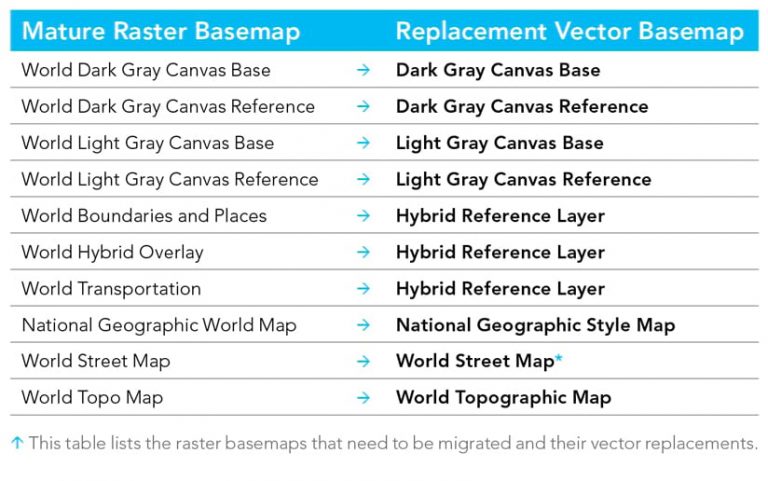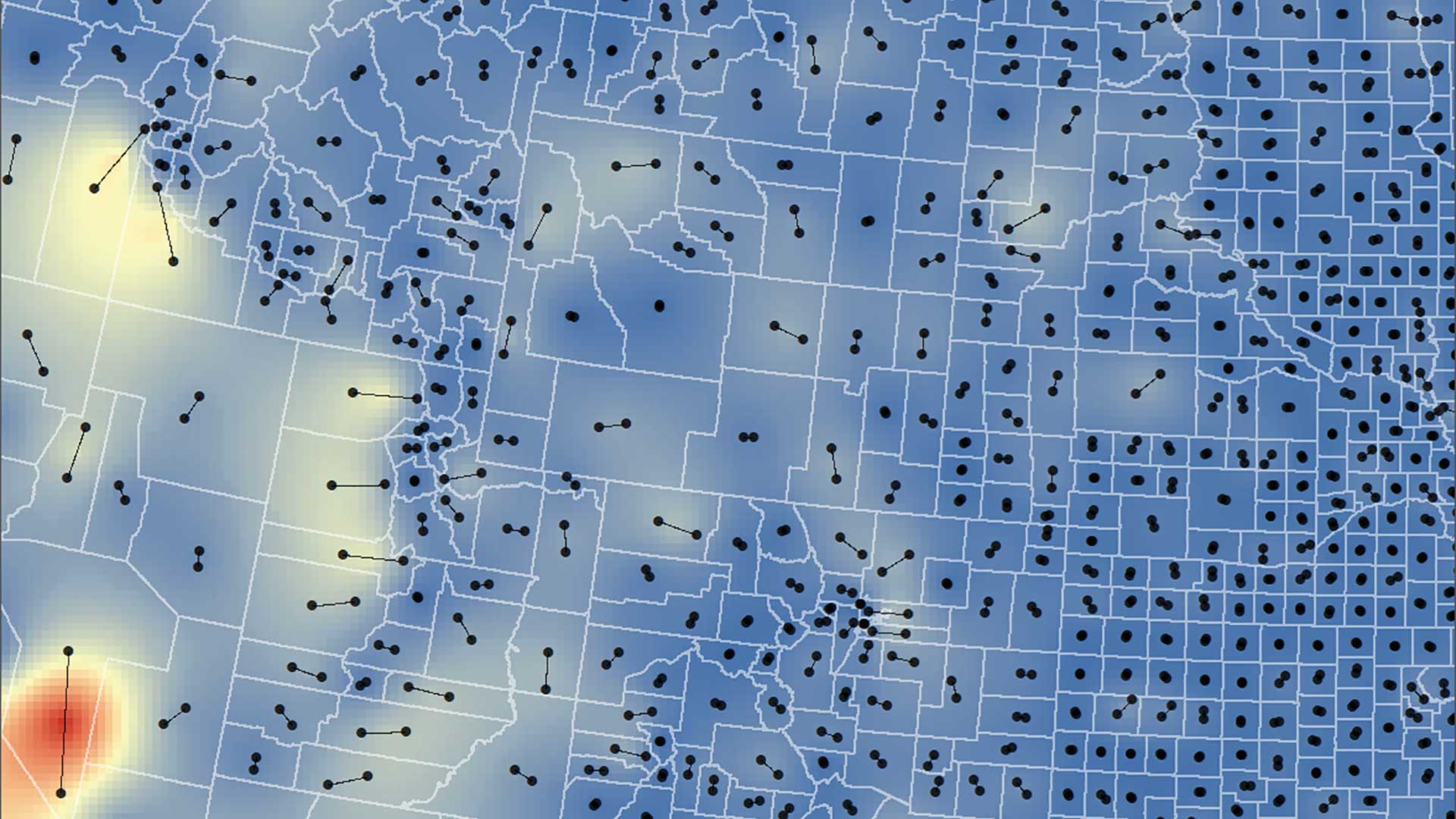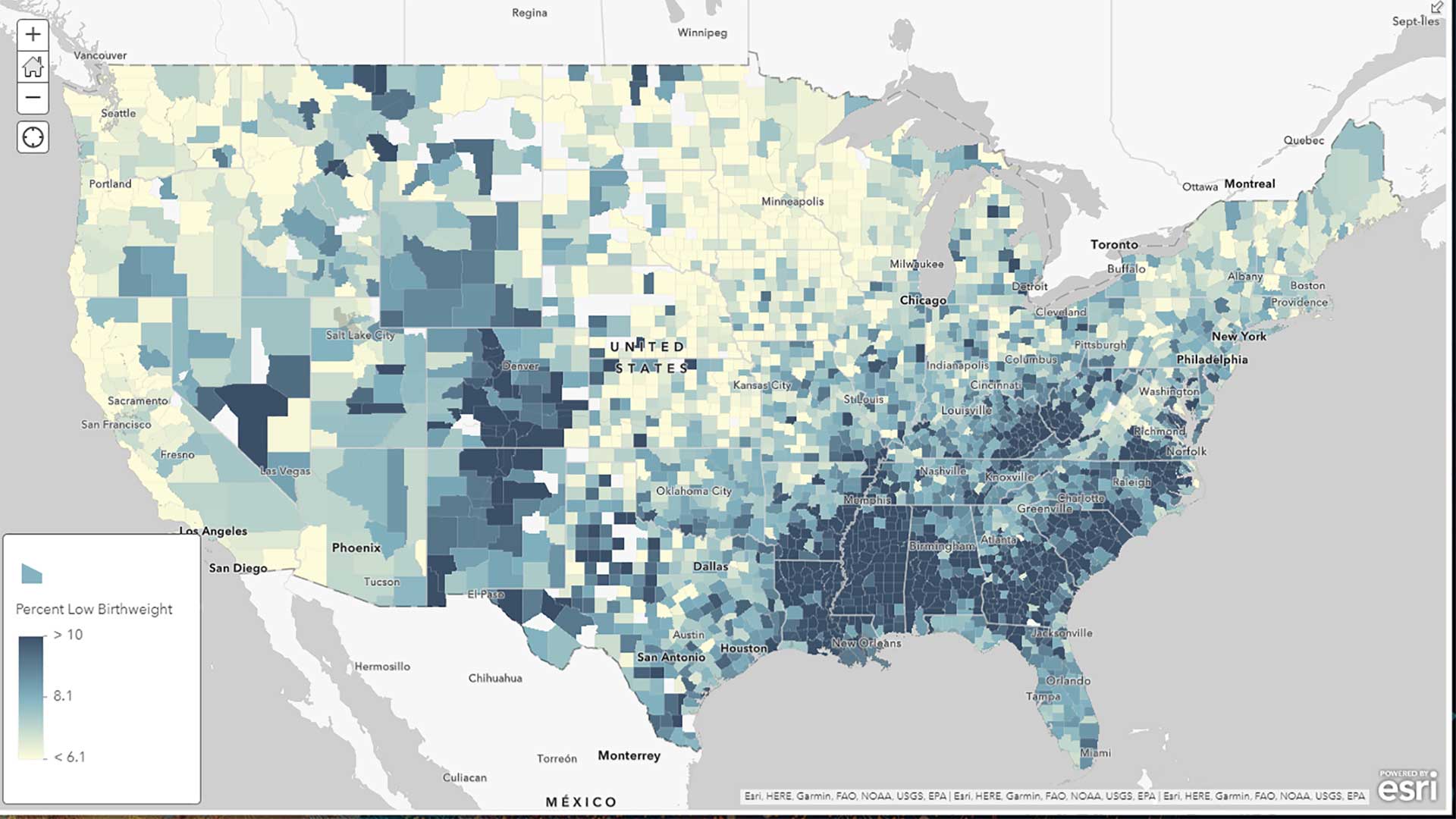If you have not already done so, make sure you update your ArcGIS maps and apps from raster to vector basemaps to avoid any disruptions. Esri vector basemaps have become the primary basemaps used by ArcGIS.
Esri vector basemaps are optimized to quickly generate and update maps and apps. With compact sizes and more efficient draw times, vector basemaps provide enhanced performance. In addition, the improved personalization options available with vector basemaps let you customize a basemap’s appearance and styles.
Raster Basemaps That Should Be Migrated
Beginning in July 2021, most Esri raster basemaps entered the mature support phase, which means that these basemaps will remain available, but they will no longer be updated. To ensure that your maps and apps use the most current and best quality data, it is important to update the basemaps you use from raster to vector as soon as possible.
*Alternates to the World Street Map vector basemap include: Streets (Night), Streets (with Relief), World Navigation Map, and Navigation (Dark Mode)

Raster Basemaps That Don’t Require Migration
These foundational raster basemaps will continue to be updated. There are no vector equivalents for these basemap services, which include imagery, elevation, and polar services.
- World Imagery (including Clarity, Firefly, WGS84, and Wayback)
- World Hillshade
- World Dark Hillshade
- Antarctic Imagery
- Arctic Imagery
- Arctic Ocean Base
- World Ocean Base




